Friends of the Stew, Ed Healy and Rone Barton, co-hosts over at the gaming podcast Atomic Array, are going to put the goodly folks of Goodman Games beneath the bright strobe lights of inquiry – or at least subject them to one of Rone’s description-defying rants.
Anyway, the subject at hand is Goodman’s latest game line – Master Dungeons – Fourth Edition adventure modules designed specifically for experienced GMs. As the introduction to both adventures promise: “The adventure is designed to reward intelligent play, just as foolish choices must surely be punished.”
Killer dungeons? Not quite. These aren’t the “Tomb of Horrors” revisited. But they are unforgiving to PCs who fall into thinking they can overcome every obstacle with an attack roll. And the adventures are grander in scope than what is regularly seen in Goodman’s signature line, Dungeon Crawl Classics.
The first two offerings in the series are “Dragora’s Dungeons” for 1st level adventurers and “Curse of the Kingspire” for characters of 4th-through-6th levels.
“Dragora” was written by Harley Stroh with Aeryn “Blackdirge” Rudel while “Curse” was a Stroh solo effort. Both adventures feature full-color cover illustrations from the catalog of Clyde Caldwell.
Stew GMs who run Fourth Edition will be enlightened to know this series has some goodies worth including in their toolbox – things they generally aren’t getting in the modules being produced by Wizards of the Coast.
Encounter table
Once a staple of some TSR modules and Dungeon magazine adventures, the encounter table lists all the encounters in the module, and in this case, presents them by location, type, the name of the monsters and their encounter level. It’s the kind of short-form document that allows those GMs with an inclination to tinker to plan any changes they intend to make.
Recently, some publishers have foregone including the encounter table, citing space concerns or the fact it’s one of the things that a tinker-inclined GM could build on their own. I think if the expectation is this module is for experienced GMs, then it makes sense to provide it, and let them hit the ground running.
Random Discovery Charts
“Curse” utilizes these to good effect, and I was surprised at how much they appeal to me as a GM. I certainly want to see more of them, and will be using and developing my own in the future.
The Discovery Chart is essentially an information gathering tool, a way to seed a locale with flavorful dungeon dressings and clues without having to write up a description for every nook and cranny on a map.
Because the charts are grouped thematically, the GM has greater control over the information and descriptions of each find.
Now, clever PCs may have an inclination to metagame when the GM is using the charts, just as they do when Random Monster charts are in play. I think that is OK, because once the PCs hit two or three similar locations, they should have gleaned enough information to move on.
This is important. The manner in which the charts are written dispenses with the PCs feeling the need to explore every last corner, of a town or village before moving onto the dungeon. They can feel confident they can move on, that some “crucial” clue was not missed, because the nature of the descriptions from the Discovery Charts are designed to keep the adventure moving.
Moreover, the flavor of the descriptions are such that the PCs could return to town or village, have the GM roll on the chart, and still come up with a result that adds some color to their exploration.
NPC motivations
The hallmark of both adventures is the use of NPCs with opposing or conflicting motivations and ambitions. These are done to create dramatic tension, but also to provide some roleplaying opportunities and instances of alliances and betrayal.
NPC motivations are clearly spelled out – which is refreshing. GMs can use this tool to devise their own skill challenges and NPC interactions, advancing the plot and story as need be.
Dispensing with the delve
The clearest signal that Master Dungeons is for experienced GMs is that the delve format has been discarded. Encounters follow the familiar “magazine-style” presentation with italicized read-aloud text followed by explanatory GM -only text. Only stat blocks for monsters and traps follows the 4E format. There is a conscious effort to keep the relevant stat blocks together to limit page turning during an encounter, but that’s the only nod to 4E layout.
The verdict: Clearly, experienced GMs – regardless of system – don’t require the delve format for every encounter. The advantage of the format is that everything a GM needs is clearly laid out before them on one or two pages. The disadvantage is that sometimes you don’t need to devote a full page to have an interesting encounter.
The best illustration of the latter was the Killing Hall encounter in “Curse.” This encounter is a simple, straightforward buzz saw. A couple paragraphs of description are all that’s needed to prep the GM. Players who have their PCs charge forward with a “kick in the door” approach are going to get mowed down.
Yet, the challenge can be beaten with other tactics. All told, the delve format would have been wasted on this encounter. Does that make it any less of a tactical challenge? No, it fits perfectly with the system, and requires the PCs to have mastery of their character’s 4E powers.
Is the delve extinct? That said, selective use of the delve format might serve even those GMs who know their way around an adventure but who are still gaining a handle on the mechanics of the 4E system. If I were to make a suggestion, it would be for Goodman to employ the delve format for such complex encounters. In “Dragora,” for example, the climatic section in The Fane of Tiamat is even written so that those elements GMs are accustomed to seeing in a delve – especially stat blocks – are already presented. Because tactical encounter maps and opponent stat blocks are both crucial to how this section runs – and because PCs would most likely move through these encounters in quick succession – it seems a logical place to employ the delve format, especially when the layout of the section is so close to being “delvish” anyway.
In such a case, I don’t the think using the delve format “dumbs down” the adventure at all, but rather enhances it by allowing the encounters to move at a brisk pace.
Maps you can use
I would be remiss if, before I close out this article, I didn’t chime in on the cartography, which strikes the right balance between the artistic and utility. Plainly, these are maps you can use – and use again. Ed Bourelle’s footmaps in “Dragora” are straightforward – exactly what’s needed to navigate The Fan of Tiamat in the last section of the adventure. And Tom Martin’s use of perspective enhances the grandness of “The Kingspire” without sacrificing playability (which I’ve often found to be true with isometric designs). Black and white maps serve sufficiently.
Want to learn more about Master Dungeons? Read on…
- Atomic Array: Episode 017: Master Dungeons
- Game Cryer: Curse of the Kingspire Review
- Musing of the Chatty DM: Curse of the Kingspire Preview
- Campaign Mastery: The Plot Thickens – Hooking Players Into Adventure







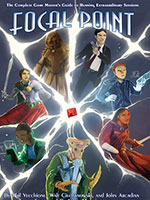
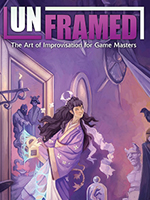



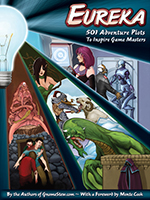
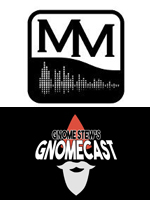
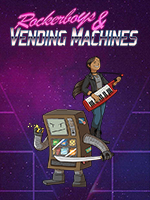
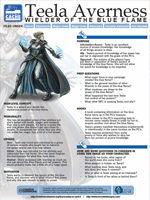
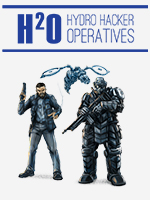
Author Harley Stroh is a regular Guest of Honor at Denver-area role-playing conventions Tacticon and Genghis Con. He’s also just a really fun guy to hang out and talk to, and a great GM. I won’t name names, but I’ve met living proof that just because you can write a game doesn’t mean you can bring it to life at the table.
I must disagree about one of these products. I bought and read “Dragora’s Dungeons” and I found it to be just a viscious dungeon crawl. Yes, if the players role play and treat problems as diplomatic issues their characters mgiht complete the module, but overall I found the product to be just a bad “Planet of the Apes” meets D&D 4e adventure. Doing the math I thought that the damage a single encounter might cause was way too high for the level of the PCs, and the feel of the adventure was that it was a railroad.
I’ve bought a lot of Goodman Games stuff lately, but I was really disappointed with this product. It isn’t for experienced GMs, it needs and experienced Gm to tweak it so that it is actually playable. It is just a long series of “Guess what PC? Your fucked! Isn’t this fun!” type moments. This is my opinion, but I expected a much more balanced adventure and a far better storyline.
And the near pornographic cover art is just ridiculous. Dragora looks like she is about to accept an AVN award. I have no problem with scantily clad women, but I don’t need my gaming gear to appear like it was written for a 13 year old boy’s sexual fantasy. Experienced GMs wonder why the cover doesn’t hint at the true nature of the adventure – a power struggle amongst three tribes of viscious species. But then again, the adventure doesn’t even cover that very well either.
I have no idea if the second adventure in the series is good or bad. I’m just sharing how I felt after reading the first one.
And I apologize for the many typos on that last comment. It is difficult to write on a BlackBerry. 🙂
@Patrick Benson – You mean the Blackberry doesn’t fit our gnome-sized fingers?
Can someone fill me in on what the “Delve layout” is? I never buy modules, so I’m curious. Might be worth picking up a few to cannibalize their format.
@deadlytoque –
Gladly. Basically, it’s a format that confines an encounter — and only one encounter — to one page or two facing pages. The layout is such that a DM need not do any page flipping and that everything needed to run the encounter, from maps to monster stats to area features, are all on this page.
The delve format was developed by David Noonan and others at Wizards of the Coast late in the life cycle of the 3.5 rules. The article here describes the process used in developing it.
http://www.wizards.com/default.asp?x=dnd/dd/20060317a
Now, if you have the 4.0 DMG, you have an example of the delve format in Chapter 11 with the description of the kobold hall encounters. If you are a third edition player, this page has download links to a preview of a delve format used for third edition rules.
http://www.wizards.com/default.asp?x=dnd/4ex/20070904a
And if you poke around the Wizards site you can find other examples as part of the previews offered for adventure products after 2006.
Designers are divided on the format. No one disputes that in running an encounter, DMs benefit by having everything laid out clearly before them.
The argument usually comes down to two points: 1) Is the benefit to the DM worth the additional space devoted to it? 2) The “one-size-fits-all” aspect of the delve means that encounters have to be written to the confines of the format, they must be one- or two-page encounters, when if written “magazine style” might take up far less/far more space. But these are production concerns, not DM issues.
As a DM, my concerns with the delve are more practical. As Wizards uses it, the outline for the entire adventure, including all non-combat encounters, are place in one section, and then all the delve encounters are grouped in another. And so, the page flipping the delve is meant to reduce, is actually exacerbated as you transition from the adventure text to the individual encounters. For some, this isn’t a problem. For others, it can be disruptive.
I haven’t read the adventures in question, and Goodman’s been an old-school publishing house for quite a while, but Dragora is pushing the limits a bit on that cover…
That said, most of Goodman’s stuff to date has been excellent. I will have to check these out.
The Delve thing needed to be explained.
It looks good on paper. But even with all that crap written out there’s still stuff like “takes 50% more damage from area effects” and “no critical hits” that is hidden within stuff like “swarm traits”. It goes to show the amount of information it would take to truly DM even one encounter in D&D 3.5 is just staggering. I make little 3×5 cards and look up the rules for every attack and trait and spell ahead of time, but I really can’t see how they expect people to run games by the rules as written.
I love Goodman Games. The really make some of the best stuff out there.
LOL, I was searching for information on making exploration and discovery fun, and found this mention of Discovery Charts.
I bought this adventure just to check out the charts. Silly me.
There are two charts, one for random clues/junk found in abandoned huts, the other for different random clues/junk found in inhabited huts.
Not as revolutionary as I had hoped.